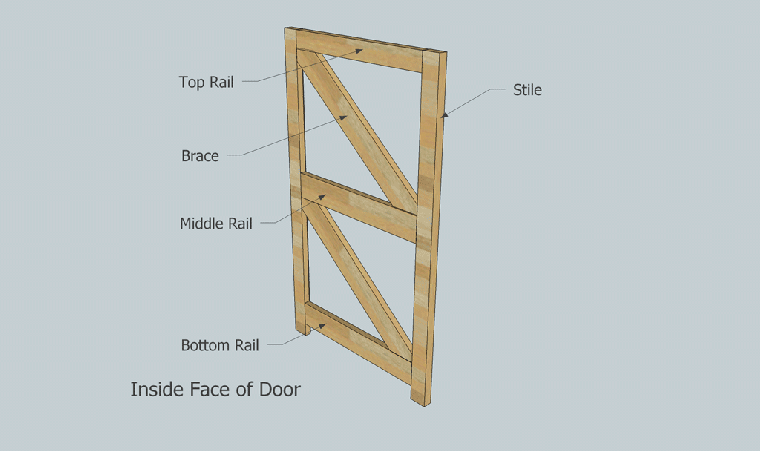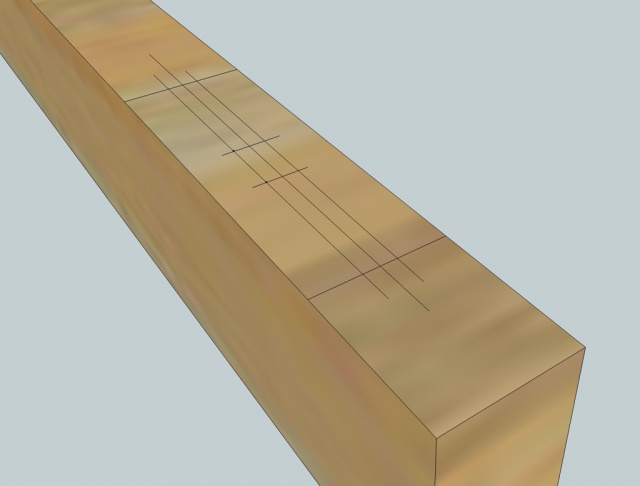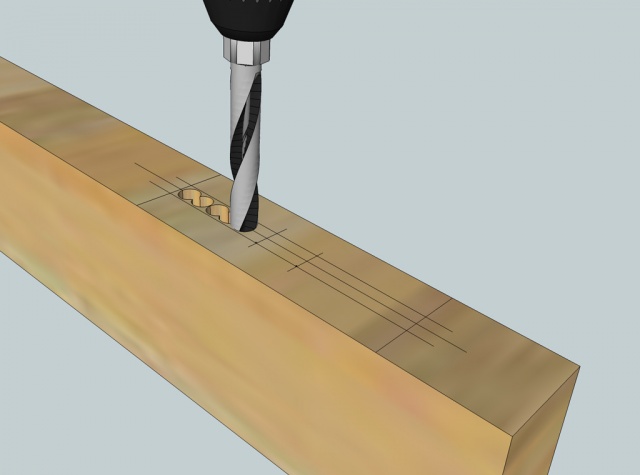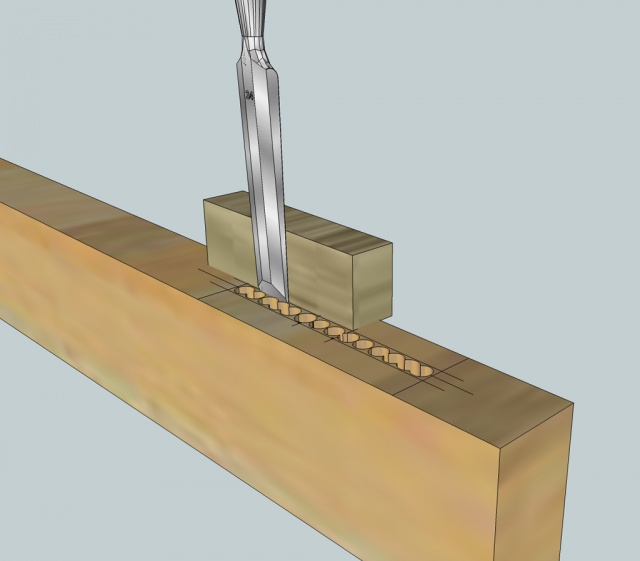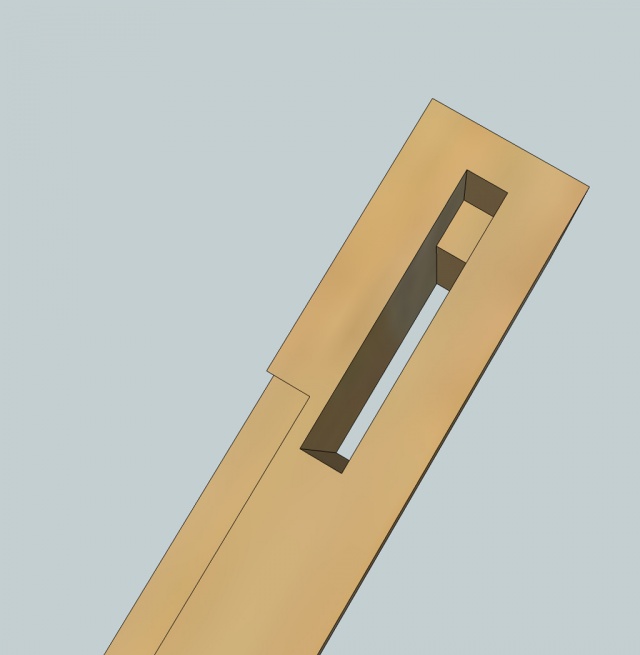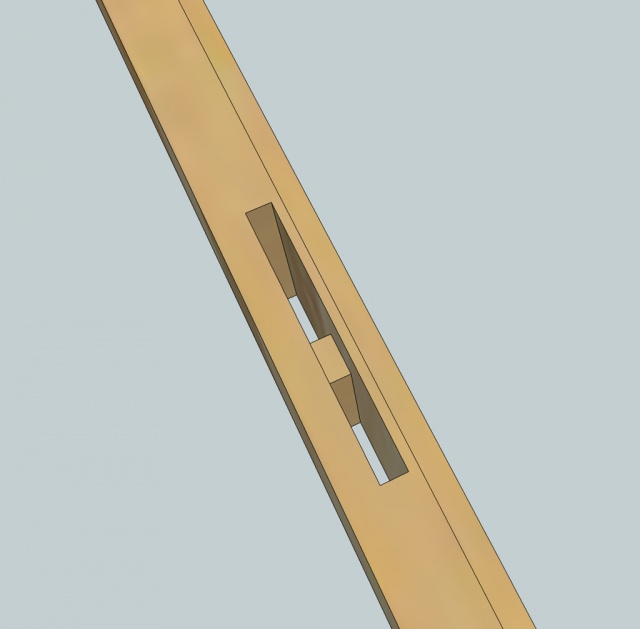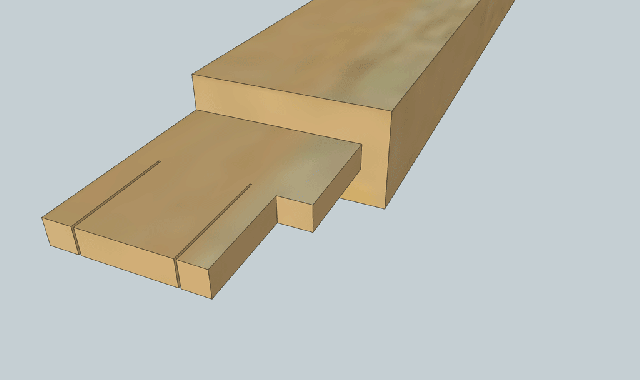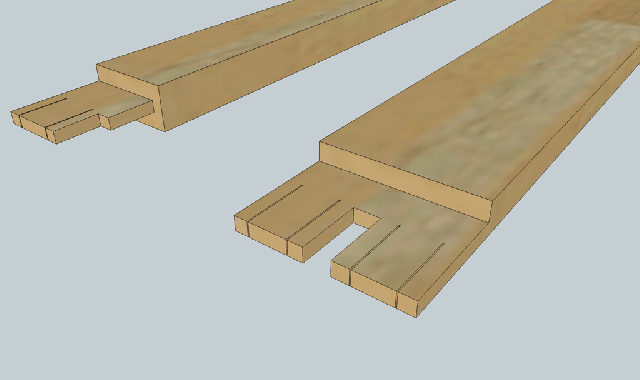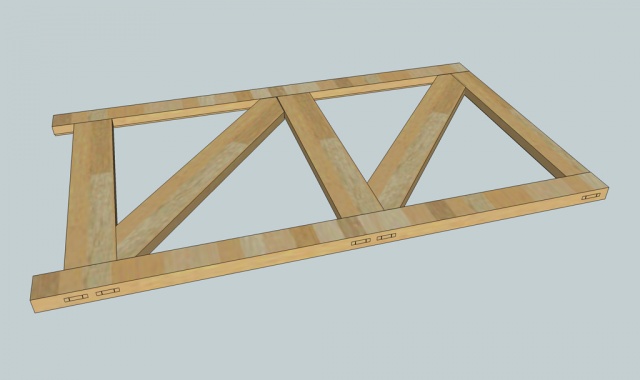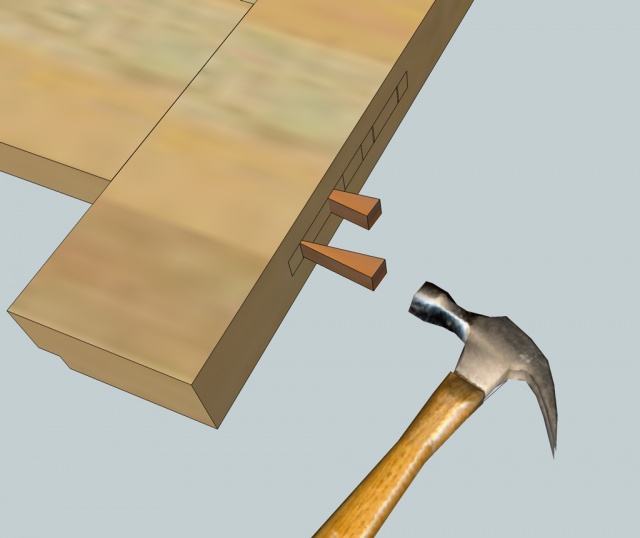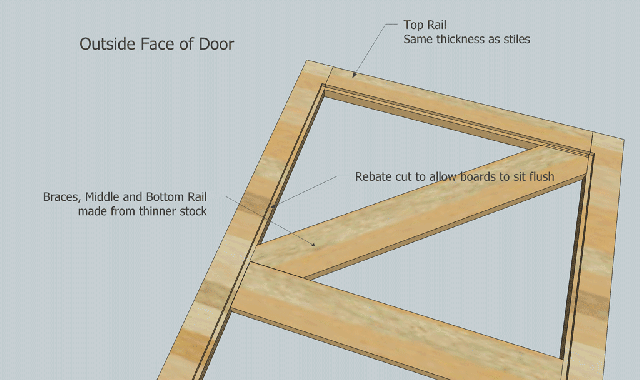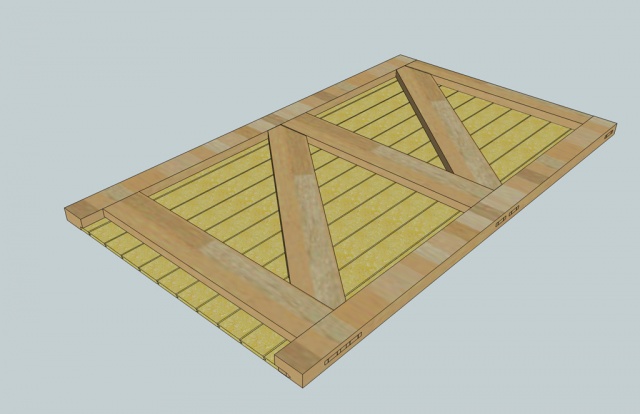Making a framed ledge and brace door
Introduction
This article describes one way of making a fairly traditional framed ledge and braced door. This type of door construction is ideal for large heavy doors such as garage or barn doors, and can also be adapted for some designs of gate. While not an entry level carpentry job, it is one well within most peoples reach if taken carefully.
Materials
Pressure treated softwood is a reasonable choice for many applications. Three different sizes will be required; A full thickness timber for the top rail and both stiles. A wider and thinner stock for the lower rails and braces, and then finally some suitable planking to provide the door cover (traditionally T&G or "matching" is used here).
Ideally the thicker stock used for the stiles and top rail should be the same thickness as the thinner stock used for the lower rails plus the thickness of the planking combined.
Take care when selecting timber for the rails since ant twist or bow here will be reflected in the geometry of the door. In some cases buying timber oversize and then machining it accurately yourself can be preferable.
Tools
For the process described here a router is required, however the remainder can be done with basic hand tools if required. A chisel morticing machine will make the job much quicker, and a chop saw or sliding mitre saw will make cutting all the stock square quick and easy.
Preparing the materials
Start by cutting both rails to the full height of the door. Then cut the top rail, and the two lower rails to the full width of the door (do not cut them shorter to fit between the stiles, since you will need the extra length for the full depth tenons). Make sure the rails are cut square, as this will have an effect on the flatness of the finished door.
Morticing the Stiles The main work to do on the stiles is chopping out the mortices. Obviously powered chisel morticing machine is ideal if you have access to one, however the traditional hand tool approach is also fine. Routing is an option on smaller stiles, but may be tricky on larger work due to the depth of mortice required.
First mark out the mortice positions:
Next Drill out the bulk of the waste. Take care to make sure you drill square in both axis *drilling in a pillar drill is preferable to a hand held drill if you have access to one):
Remember that haunched sections do not need drilling to the full depth. Once all the drilling is done, the mortice can be squared up with a chisel. One technique that can be helpful if you have difficulty keeping the chisel square all the way through a deep mortice, it to place a known square block on top of the work to use as a guide:
With deep "through" mortices like these it is often handy to mark out both sides of the timber. Then you can turn the timber over and chisel from the reverse side as well. This will also prevent any breakout of the timber as the chisel exits the wood.
When you are done you should have a nice neat top mortice:
and a pair of double mortices for the lower rails in each stile:
Cutting the tenons on the rails
Carefully mark out the tenon positions on the rails. Then cut them as follows:
(note cutting tenons is not described here in detail, but whatever method you want can be used; e.g. hand cut with a tenon saw, on a table saw with tenon jig, using a sliding mitre saw with trench cutting capability, with a dado blade, or ideally in this case with a router and jig such as the large tenon jig described here).
Top Rail The top rail is made from the same stock as the stiles. The tenon will need to be positioned in the mid point (front to back) of the stock. Since this will go right at the top of the frame, and we don't want the ends of the stile to split, it is usual to make this tenon less than the maximum height - typically leaving an inch or so if wood at the top of the stile over the matching mortice. An improvement is to in addition put a haunch on this tenon to maximise the strength of the tenon without risk of weakening the stile too much.
If using a haunched tenon, then remember when chopping the matching mortice to not cut the full depth on the haunched section.
For added strength when assembled a couple of saw cuts down each tenon will allow wedges to be made and driven into the joints later.
Lower rails The lower rails are made from a wider and thinner stock. This allows space for the planking to sail past them while still remaining within the profile of the door. As a result the tenons on the ends of these rails will be cut flush (or close) to one side. So as not to weaken the stile too much by having a long morticed section, a central haunch can be included in these tenons to retain some extra strength in the stile. Again saw cuts can be included for wedges later.
Braces
Cut these long enough for purpose, but don't cut to shape yet.
Assembly
Dry fit and test assembly first. If all looks good then glue up the rails and stiles and assemble. Use sash cramps to pull everything tight. Check the frame for square. You can tweak this while the glue is wet by lifting and dropping the door on one corner as required. If you find it difficult to get it to "stay" where you want it, then slacken off the cramps, and apply them at a angle across the frame - this will have the effect of pulling it in the direction you want. If you assemble the door flat on the ground, then you can also add some weights to make sure it stays flat.
Once you are happy it is square and flat, mark and cut the braces to fit. The braces should rise up from the hinge side to the free side of the door. These can be glued and screwed into position. Depending on how you have cut your braces, finding suitable screw positions will probably be limited to one at the end of the brace up/down into the rail - and even then it will usually need to be a long screw.
Finally glue up wedges and hammer them firmly into the slots in the ends of the mortices. Leave the wedge ends sticking out until the glue has set and then cut them off flush.
Cutting the rebate
For the planks to lay evenly on the door you now need to cut a rebate with a router into the inside edge of the top rail and both stiles. This is on the outside of the door. The rebate depth should be down to the level of the thinner stock used for the lower rails and braces. The width is less critical, but half and inch of so is usually adequate.
You will need to tidy up the two corners on the top rail to remove the radius of the cutter and leave them square.
Planking
Cut all your planks to length - so they run from the top of the rebate in the top rail to level with the bottom of the stiles. Check the fit width ways. If the door is not an exact multiple of planks wide, then trim the side of both the edge panels to match. If using T&G, then test fit all the boards before fixing. Don't fit the boards too tightly together since you want to allow for some movement due to humidity changes. Fix the planks with nails or screws in the middle of each board into each of the rails and the braces. This should allow the wood to "move" and the tongue of each board will simply move in or out of its groove without opening up a visible gap. For high quality work, you might also consider counter boring each screw hole and finishing with a matching wood plug.
An alternative approach to planking is to forgo cutting the rebate, and making all the door rails the same thickness as the stiles. The planks are simply applied to the full face of the door. This makes for a slightly heavier and thicker overall construction, that is not as weather resistant - however its ok for interior doors, and also quicker and simpler to make.
Finishing
Whatever you use to decorate the door, paint the tongues and grooves of the boards before fitting [one coat only], along with the surfaces on the jambs, ledges and braces that will be 'hidden' when the boards are fixed.
